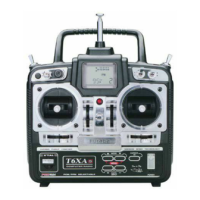the vertical fin or the tailboom, and let the excess length trail behind the aircraft (be sure it
cannot tangle with the tail rotor on a helicopter).
You may run the antenna inside of a non-metallic housing within the fuselage, but range may
suffer if the antenna is located near metal pushrods or cables. Be sure to perform a range
check before flying. With the antenna collapsed, you should be able to walk 20 - 30 paces
from the model without losing control or seeing “jitter” in the servos.
Connectors
When you insert servo or battery connectors into the
receiver, note that each plastic housing has an alignment tab.
Be sure the alignment tab is oriented properly before
inserting the connector. To remove a connector from the
receiver, pull on the connector housing rather than the wires.
Using The Aileron Extension
If your aileron servo (or others) are located too far away
to plug into the receiver, use an aileron extension cord to
extend the length of the servo lead. Additional extension cords of varying
lengths are available from your hobby dealer or Futaba.
Vibration and Waterproofing
The receiver contains precision electronic parts. Be sure to avoid vibration, shock, and
temperature extremes.
For protection, wrap the receiver in foam rubber or other
vibration-absorbing materials. It’s also a good idea to waterproof the receiver
by placing it in a plastic bag and securing the open end of the bag with a rubber band before
wrapping it with foam. If you accidentally get moisture inside the receiver, you may
experience intermittent operation or a crash.
– 9 –

